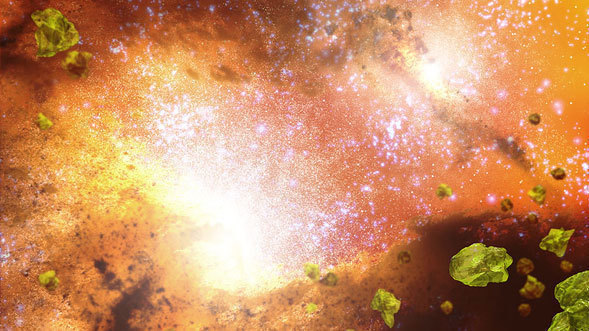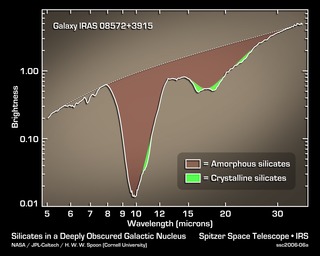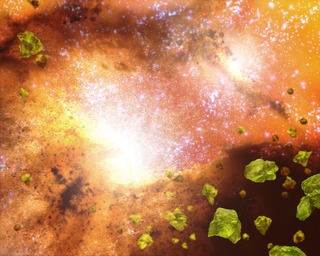
Credit: NASA/JPL-Caltech/T. Pyle (SSC)
Artwork • February 15th, 2006 • ssc2006-06b
ssc2006-06b
This artist's concept shows the violent core of a pair of colliding galaxies and the delicate greenish crystals that are sprinkled throughout the core. The white spots represent a thriving population of stars of all sizes and ages. NASA's Spitzer Space Telescope detected more than 20 bright and dusty galactic mergers like the one depicted here, all teeming with the tiny gem-like crystals.When galaxies collide, they trigger the birth of large numbers of massive stars. Astronomers believe these blazing hot stars act like furnaces to produce silicate crystals in the same way that glass is made from sand. The stars probably shed the crystals as they age, and as they blow apart in supernovae explosions.At the same time the crystals are being churned out, they are also being destroyed. Fast-moving particles from supernova blasts easily convert silicates crystals back to their amorphous, or shapeless, form.How is Spitzer seeing the crystals if they are rapidly disappearing? Astronomers say that, for a short period of time at the beginning of galactic mergers, massive stars might be producing silicate crystals faster than they are eliminating them. When our own galaxy merges with the Andromeda galaxy in a few billion years, a similar burst of massive stars and silicate crystals might occur.
About the Object
- Name
- Type
- Galaxy > Type > Interacting






